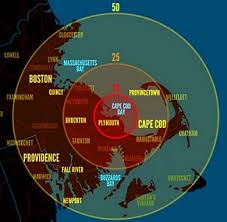 The Sierra Club is opposed to nuclear energy. It is a dangerous energy technology for humanity. From reactor safety to nuclear proliferation to the required long-term storage of nuclear waste (which remains lethal for more than 100,000 years), it is a technology we should be weaning ourselves from as quickly as possible. Nuclear is risky and expensive, and every dollar spent on nuclear is one less dollar spent on truly safe, affordable and renewable energy sources.
The Sierra Club is opposed to nuclear energy. It is a dangerous energy technology for humanity. From reactor safety to nuclear proliferation to the required long-term storage of nuclear waste (which remains lethal for more than 100,000 years), it is a technology we should be weaning ourselves from as quickly as possible. Nuclear is risky and expensive, and every dollar spent on nuclear is one less dollar spent on truly safe, affordable and renewable energy sources.
Nuclear Power in Massachusetts
The Pilgrim Nuclear Power Plant in Plymouth, Mass. is the only operating commercial nuclear power plant located within Massachusetts. While we were pleased to hear Pilgrim’s owners, Entergy, announce plans to officially shut Pilgrim down by June 2019, we believe there are still a number of issues posed by this plant. The lack of effective management demonstrated by the persistent emergency shutdowns has not been addressed. Over four million people live within fifty miles of the Pilgrim plant; fifty miles was the radius of evacuation for the Fukushima accident in Japan.
With the plant's shutdown on the horizon, the next major question is how to deal with all of the radioactive waste, and how to replace the plant’s share of electricity generation. While in full operation, the Pilgrim plant produces about 5% of our state's electricity capacity. Massachusetts must make up that share while also achieving our climate goals. Larger investments in clean, safe, renewable energy like solar, offshore wind and energy efficiency are the path we should be taking.
What Is Nuclear Power Generation? What Makes It Dangerous?
Nuclear power plants produce heat from controlled nuclear reactions. These nuclear reactions are called fission. The heat produced by fission is removed by a cooling medium, mostly water in the United States, through a heat exchanger and the heat in the water is used to produce steam in a controlled manner. The steam spins turbines which in turn generate electricity. To achieve the reaction or fission, a material such as uranium ore is refined to produce a high concentration of a fissile form or isotope of uranium and then fabricated into fuel rods. The fuel rods are inserted into a reactor core that is designed to produce controlled nuclear reactions. Those reactions produce the heat that produces the steam that drives the turbines.
There are several sources of danger in a nuclear power reactor. The primary loop of cooling water can become radioactive, leak and contaminate an area. This is what happened at Chernobyl and Three Mile Island. One radioactive release from water is called tritium, which is a radioactive form of hydrogen. Tritium has long been suspected of leaking from the Pilgrim plant into Massachusetts Bay.
Another source of danger is the fuel rods. They become depleted or “spent”; that is, the uranium gets exhausted and the rods become useless. Spent fuel rods remain dangerously radioactive for hundreds of thousands of years after their use. Our government does not have a way to store spent fuel rods offsite safely, so most remain on site at the reactor facility. The continuing high level of radiation produces heat that must be removed with cooling to avoid catastrophic meltdown. Water is circulated in the storage pools at high rates by electricity powered systems. If the electricity fails at a nuclear power plant, there is serious risk of a meltdown. The rods must be kept in these pools of water for about five years until the residual radiation has decreased enough so that the rods are cool enough to be able to store them in dry casks.
A meltdown is what happened at Fukushima. Electric power failed at the plant due to the earthquake and tsunami. Without that power neither the reactor nor the spent fuel rods could be cooled, resulting in a meltdown in each of the three operating reactors and a fire in the spent fuel room. The radiation leaked out and is still being detected hundreds of miles away from the plant today. It does not recognize borders or lines on a map. This is a collective issue for all of humanity to be concerned about.
Exposure to uranium has been linked to high rates of various cancers in mine workers and those living near nuclear reactors. Exposure to radiation can cause birth defects and many types of cancers. The International Journal of Cancer reported a link to a rise in childhood leukemia to being in close proximity to a nuclear reactor.
We can do better
There are better alternatives to nuclear power, and the Sierra Club is committed to supporting a clean and safe energy future. We believe that our dollars and efforts are better spent on safe, clean, and renewable energy sources.